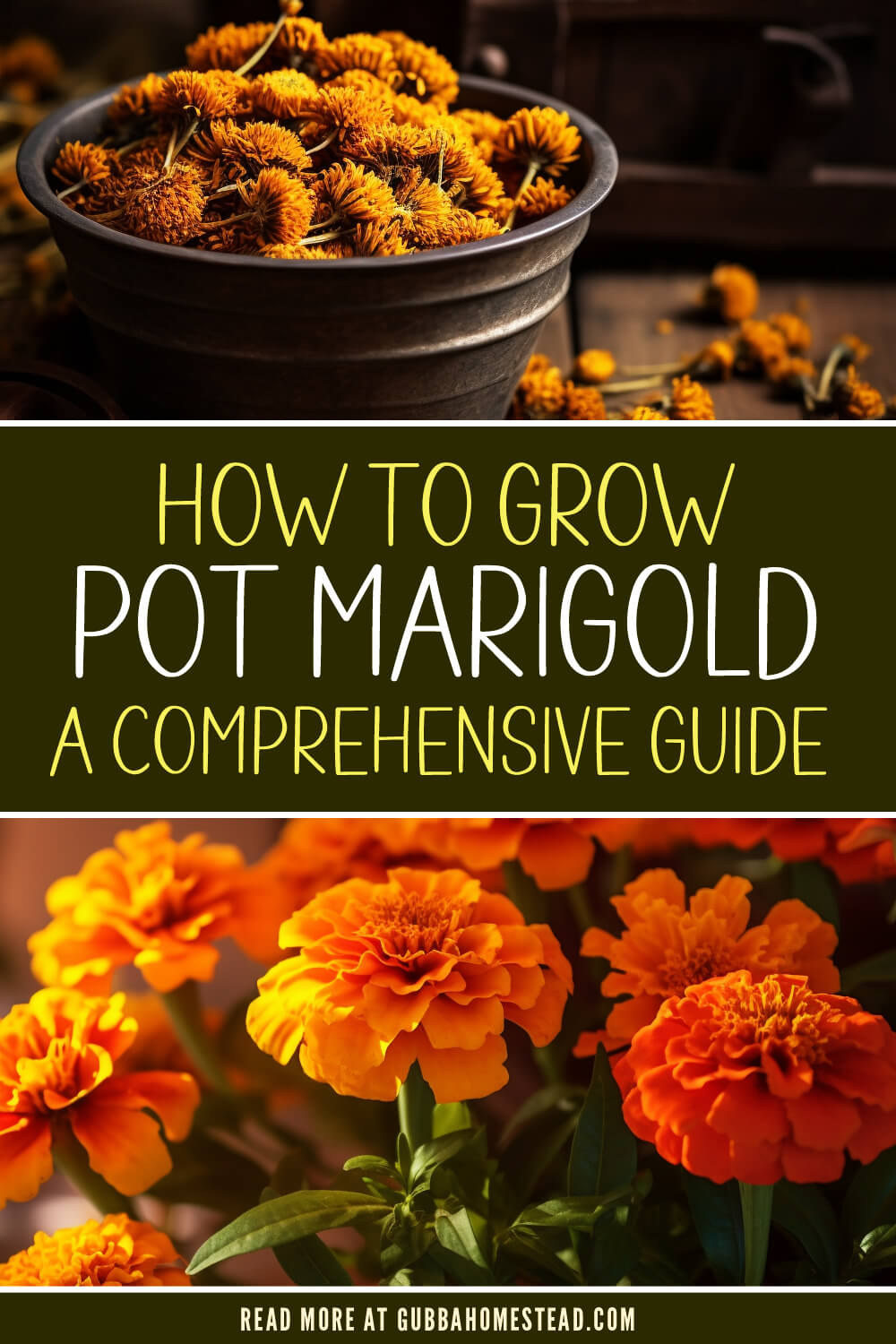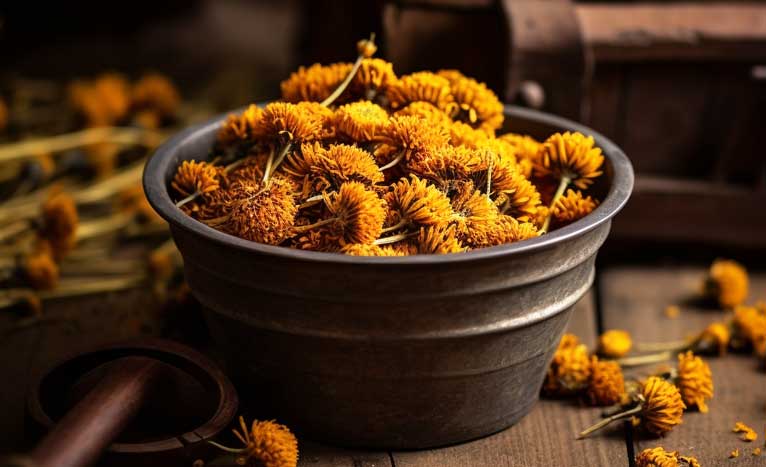On my never-ending adventure to find the perfect flowers to plant for pollinators (specifically, my bees) I discovered that pot marigolds are a gold mine for honeybees! Not only do bees love this flower, but they will add a hint of love to your garden or yard. Planting flowers reminds me of growing up and planting flowers with my mom in our small driveway garden. Now, I’m remembering these traditions by planting my own flower garden to benefit my honeybees.
To be honest, growing flowers can be a bit daunting, for me at least. I have been doing a mix of starting from seed and purchasing straight from the nursery. Both have their advantages. For example, starting flowers from seed take time but this method saves you money. Buying flower starts from the garden saves you time but will cost you money! If you have patience, I would suggest starting from seed. Not only is starting flowers from seed a good learning experience but you will gather skills that you can pass down through your family just like you can gather flowers at through the season! Here are pot marigold seeds that you can use to start in your garden.
If you're a gardening enthusiast looking for an easy-to-grow and low-maintenance plant that also adds color and beauty to your garden, pot marigold is an excellent option. This vibrant and versatile plant is a favorite of many gardeners due to its medicinal properties and aesthetic appeal. In this blog, I will guide you on how to grow pot marigold successfully.

Pot marigold, also known as calendula officinalis, is a flowering plant that belongs to the Asteraceae family. It's a hardy annual plant native to southern Europe, but it's now grown all over the world. Pot marigold has been used for medicinal purposes since ancient times, and it's still a popular herb used to treat various ailments today. It is wild to think that the plants that surround us and that are common to us often have medicinal benefits but this knowledge as been lost through the generations! Take your power back by planting medicinal flowers and learning about them.
In addition to its medicinal properties, pot marigold is an excellent ornamental plant that can brighten up any garden or indoor space. It's easy to grow and requires minimal maintenance, making it an ideal choice for beginners and seasoned gardeners alike.
I love having minimal maintenance plants in my garden. If you know me, I am a low-fuss gardener. Some people get caught up in the time it may take to garden, but let me help you limit time spent hands-on in the garden for maximum results because that is how I garden!
What is Pot Marigold?
Pot marigold is a flowering plant with bright yellow to orange-colored petals. It's an annual plant, which means it completes its life cycle in one growing season. The leaves of pot marigold are dark green and hairy, and the flowers can range in size from 1 to 4 inches in diameter.
Pot marigold is known for its medicinal properties and is used in various home remedies and skincare products. It's also used in cooking and adds a distinct flavor to soups, stews, and other dishes. Crazy, right? We have become accustomed to thinking flowers are just ornamental, but some can be consumed like the pot marigold and the dandelion!
Choosing the Right Variety of Pot Marigold
Pot marigold comes in different varieties, each with its unique characteristics. Some of the popular varieties of pot marigold include:
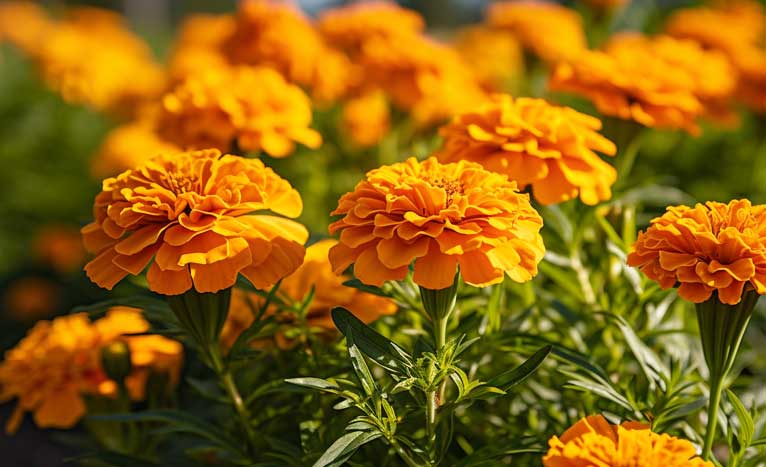
Orange King: This variety has large, bright orange flowers and is known for its medicinal properties.
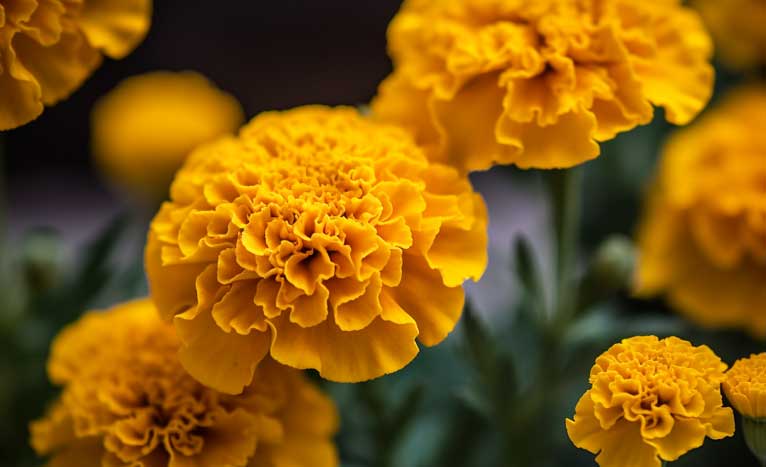
Lemon Zest: This variety has lemon-colored flowers and is easy to grow in containers.

Fiesta Gitana: This variety has a mix of bright colors and is perfect for adding color to your garden or landscape.
When choosing the right variety of pot marigold, consider the color of the flowers, the size of the plant, and its growth habits. You may prefer to have all one color or mix and match. I personally love having a variety. You could plant one section as one color and another section of another.
The garden is your palette!
Best Time to Grow Pot Marigold
Pot marigold is a cool-season plant that grows best in temperatures between 60°F and 70°F. The best time to grow pot marigold is in the spring or fall when the temperature is moderate. In warmer climates, you can grow pot marigold throughout the year. I would suggest to work the soil in May when the soil is still a bit cooler.
Location and Soil Requirements for Pot Marigold
Pot marigold grows best in well-draining soil that's rich in organic matter. It can grow in a variety of soil types, but it prefers soil with a pH of 6.0 to 7.0. Pot marigold needs full sun to thrive, so choose a location that gets at least six hours of sunlight daily.
Pot Marigold Propagation Methods
Pot marigold can be propagated from seeds or cuttings. The easiest and most common way to propagate pot marigold is by sowing seeds.
Propagating Pot Marigold from Seeds
To propagate pot marigold from seeds, follow these steps:
- Start by preparing the soil. Mix equal parts of compost, sand, and garden soil to create a well-draining mix.
- Fill a seedling tray or small pots with the soil mix, leaving about 1/4 inch space at the top.
- Sow the seeds about 1/4 inch deep into the soil.
- Water the soil gently to moisten it.
- Cover the seedling tray or pots with a plastic wrap or lid to create a greenhouse-like environment.
- Place the seedling tray or pots in a warm and bright location but away from direct sunlight.
- Once the seeds have germinated, remove the plastic wrap or lid and place the tray or pots in direct sunlight.
- Water the seedlings regularly but avoid overwatering as it can cause root rot.
Propagating Pot Marigold from Cuttings
To propagate pot marigold from cuttings, follow these steps:
- Take a 3- to 4-inch cutting from a healthy pot marigold plant.
- Remove the leaves from the bottom 2 inches of the stem.
- Dip the cut end of the stem into rooting hormone powder.
- Plant the stem into a pot filled with well-draining soil.
- Water the soil gently to moisten it.
- Cover the pot with a plastic wrap or lid to create a greenhouse-like environment.
- Place the pot in a warm and bright location but away from direct sunlight.
- Once the cutting has rooted, remove the plastic wrap or lid and place the pot in direct sunlight.
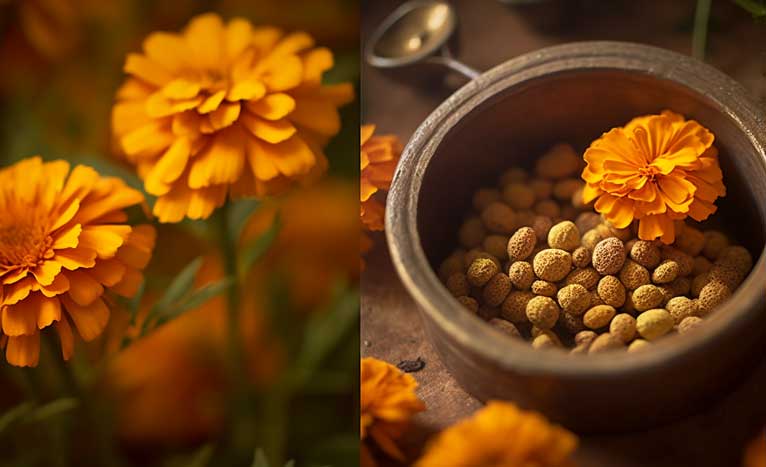
Planting Pot Marigold Seeds
When planting pot marigold seeds, follow these steps:
Choose a location that gets at least six hours of direct sunlight daily.
Prepare the soil by removing any weeds or debris and adding organic matter like compost or well-rotted manure.
Sow the seeds about 1/4 inch deep into the soil, leaving about 6 inches of space between each seed.
Water the soil gently to moisten it.
Cover the seeds with a thin layer of soil or vermiculite to protect them from direct sunlight.
Water the seeds regularly but avoid overwatering.
Caring for Pot Marigold
Pot marigold is a low-maintenance plant that requires minimal care. Here are some tips for caring for pot marigold:
- Water the plant regularly but avoid overwatering as it can cause root rot.
- Fertilize the plant every two weeks during the growing season with a balanced fertilizer.
- Deadhead the plant regularly to encourage continuous blooming.
- Mulch the soil around the plant to retain moisture and suppress weeds.
- Prune the plant regularly to keep it from becoming too leggy or sprawling.
- Pests and Diseases Affecting Pot Marigold
Pot marigold is generally a pest-resistant plant, but it can be affected by some common pests and diseases, such as:
- Aphids
- Spider mites
- Whiteflies
- Powdery mildew
- Root rot
To avoid dealing with pests, you can plant the marigolds near other flowers to throw off the natural pests. This is a common technique when planting vegetables—companion planting to confuse common pests.
Harvesting Pot Marigold
Pot marigold blooms from early summer to late fall, depending on the variety and growing conditions. You can harvest the flowers when they're fully open and the petals are at their brightest color. To harvest the flowers, follow these steps:
- Choose a dry and sunny day to harvest the flowers.
- Use a pair of sharp scissors to cut the stem about 1 inch below the flower head.
- Place the harvested flowers in a basket or container.
- Rinse the flowers with water to remove any dirt or debris.
- Allow the flowers to dry in a cool and dark place for a few days.
- Store the dried flowers in an airtight container in a cool and dark place.
Uses of Pot Marigold
Pot marigold has numerous uses, including:
Medicinal purposes: Pot marigold has anti-inflammatory, antiseptic, and antimicrobial properties, making it useful in treating various ailments like skin irritations, wounds, and digestive issues.
Culinary purposes: Pot marigold adds color and flavor to soups, stews, and salads.
Cosmetic purposes: Pot marigold is used in various skincare products like creams, ointments, and soaps due to its healing and soothing properties.
Ornamental purposes: Pot marigold is a popular ornamental plant that adds color and beauty to gardens, landscapes, and indoor spaces.
Pot marigold is an easy-to-grow and low-maintenance plant that adds color, beauty, and versatility to any garden or indoor space. With proper care and attention, you can grow this vibrant and useful plant successfully. Whether you're a beginner or a seasoned gardener, pot marigold is a plant worth growing. Seriously, it is an easy flower to grow and will give you confidence as a gardener!
FAQs
What is the best time to plant pot marigold?
The best time to plant pot marigold is in the spring or fall when the temperature is moderate. Starting from seed is the easiest method and can be direct sown into the soil come early to mid-spring.
How often should I water pot marigold?
Water pot marigold regularly but avoid overwatering as it can cause root rot.
Can pot marigold grow in containers?
Yes, pot marigold can grow in containers, making it an excellent choice for small gardens or indoor spaces.
How do I harvest pot marigold?
Harvest pot marigold when the flowers are fully open and the petals are at their brightest color. Cut the stem about 1 inch below the flower head and dry the flowers in a cool and dark place.
What are the uses of pot marigold?
Pot marigold has numerous uses, including medicinal, culinary, cosmetic, and ornamental purposes.
You will love the marigold and so will your local honeybees! I think it is important to cultivate gardens with our pollinators in mind so we can give back to the environment and animals that help cultivate our lives!
